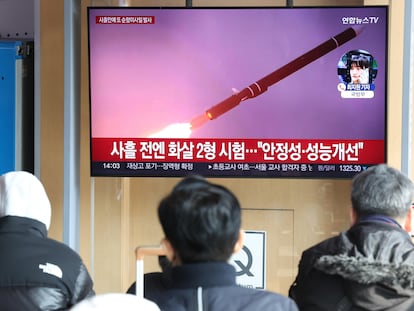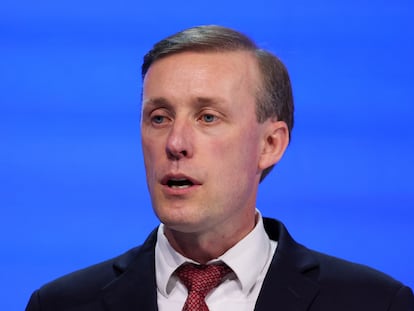A fourth war lurks
Not since 1950 has North Korea presented such a dangerous face, according to leading experts. So much so that they believe the decision to go to war again has already been taken

To the two wars already underway, in Ukraine and Gaza, and the threat of a third in Taiwan, have been added the ominous clouds that herald the possibility of a fourth. For added drama, a common ingredient in all these scenarios is added to the mass killings unfolding. The civilian-killing weapon par excellence, the nuclear bomb, is in the hands of one of the actors in each of the potential or ongoing conflicts. Notable historians and political scientists have also pointed out the danger of connection between simultaneous conflicts and threats, and recall that this is how the apocalyptic plot of the two world wars of the 20th century was woven.
The alarm has been triggered by the growing bellicosity of North Korea, which has just abandoned its traditional policy of peaceful reunification of the peninsula in favor of the military conquest of South Korea. Dictator Kim Jong-un has singled out his neighbor and brother to the South, the Republic of Korea, as his main enemy. At the same time, he has torn down the monument built in 2001 in honor of a future reunification and removed the achievement of such a historic goal from the Constitution. This is taking place amid the heat of the North’s artillery maneuvers, nuclear threats and ballistic missile tests over South Korean waters, one of the favored pastimes of the plump and bellicose communist autocrat. Not since 1950 has the regime presented such a dangerous face, according to leading experts. So much so that they believe the decision to go to war again has already been taken.
The aggressive path of Russia — and to varying degrees China — could not be left without emulation. Kim Jong-un is inspired by the invasion of Ukraine and the growing threats against Taiwan, but also by Israel’s response to the Hamas attacks of October 7. When the politics of force prevails over the force of international legality, nothing could be more normal than for the most rogue regimes to try to exceed the bad example of the most powerful. In partnership with each other, they shun sanctions, associate their destructive industries, and even garner commercial returns. Pyongyang has become a major supplier of missiles, artillery shells, and probably nuclear material, first to Russia and then to forces fighting against the United States and Israel by proxy in Lebanon, Iraq, Syria, and Yemen.
Russia and China were engaged in nuclear disarmament talks with Pyongyang between 2003 and 2007, and in the agreement signed with Iran in 2015. Something has gone badly awry in the past two decades for the worst dictatorships to be lining up in a menacing conglomerate, much like the 1940 Tripartite Pact between Germany, Italy, and Japan that ruined Europe and the world with the most devastating war in history.
Sign up for our weekly newsletter to get more English-language news coverage from EL PAÍS USA Edition
Tu suscripción se está usando en otro dispositivo
¿Quieres añadir otro usuario a tu suscripción?
Si continúas leyendo en este dispositivo, no se podrá leer en el otro.
FlechaTu suscripción se está usando en otro dispositivo y solo puedes acceder a EL PAÍS desde un dispositivo a la vez.
Si quieres compartir tu cuenta, cambia tu suscripción a la modalidad Premium, así podrás añadir otro usuario. Cada uno accederá con su propia cuenta de email, lo que os permitirá personalizar vuestra experiencia en EL PAÍS.
¿Tienes una suscripción de empresa? Accede aquí para contratar más cuentas.
En el caso de no saber quién está usando tu cuenta, te recomendamos cambiar tu contraseña aquí.
Si decides continuar compartiendo tu cuenta, este mensaje se mostrará en tu dispositivo y en el de la otra persona que está usando tu cuenta de forma indefinida, afectando a tu experiencia de lectura. Puedes consultar aquí los términos y condiciones de la suscripción digital.











































